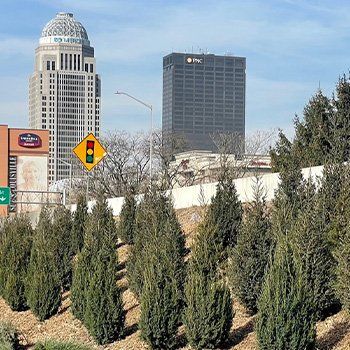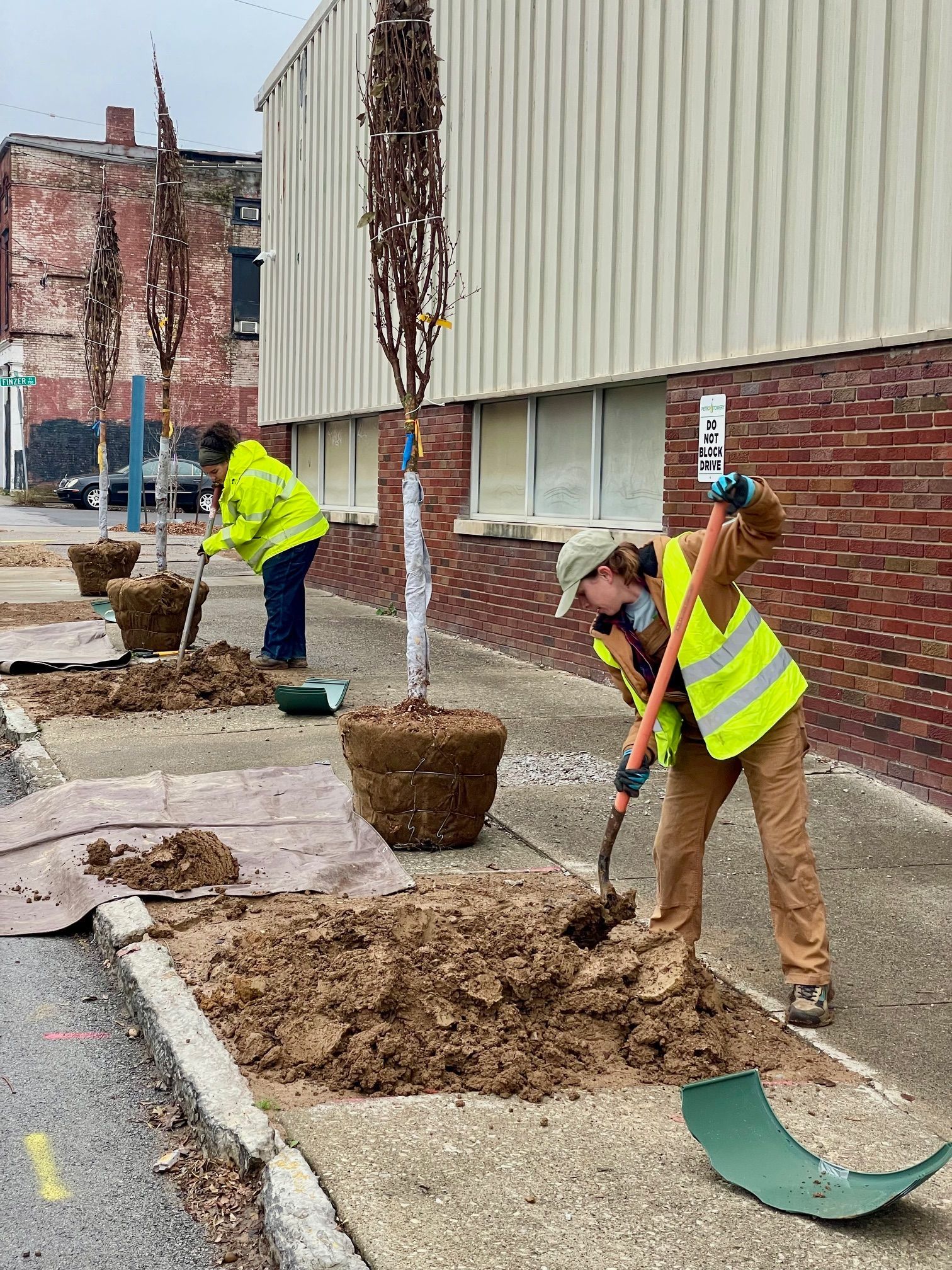Northeast Regional Library Trees
On the grounds of the Northeast Regional Library, you will find a collection of regionally significant plants that were hybridized or found by local and regional plantsmen over the past century. Beginning in 2019, TreesLouisville has embarked on a project to install many of these plants at the newly-built Northeast Regional Library as a way to preserve and continue Louisville’s horticultural legacy.
Back in the early days of Louisville’s nursery industry, the environment was slower-paced and populated with people that were passionate about horticulture and produced their plants as a hobby as well as a vocation.
Most nursery owners kept propagation beds in their backyards. Propagating plants was an economic necessity because it is the cheapest way to create new plants. Unfortunately, there are many things that can go wrong during propagation -- the plants could dry out, a frost could threaten to destroy cuttings, or a hungry critter could eat everything in a nursery bed. Keeping beds close at hand went a long way to keep young plants protected with a watchful eye.
Before urban sprawl, Louisville was populated with a number of nurseries: Boone Gardiner, Lillard's, and Roxy. Just to the east, in Crestwood, Theodore Klein established a nursery that became world-renowned and is now the home of Yew Dell Botanical Gardens. Rudy Haag's Nursery was located on Six Mile Lane in Jeffersontown.
Clarence E. 'Buddy' Hubbuch was the first Horticulture Director at Bernheim Arboretum and Research Forest. He established the Bernheim Holly Collection, which features over 950 trees and shrubs that represent 445 individual species. His tenure at Bernheim lasted 33 years (1962-1995).
Our region is also fortunate to have several individuals with an incredible passion for trees and plants. Allen Bush is a native Louisvillian that owned and operated a nursery in North Carolina before coming back home to Louisville. His 'Alley Cat' Redbud is planted on the grounds at NERL.
Many people are familiar with Bob Hill, the retired Courier-Journal columnist who ran Hidden Hill Nursery for a number of years because of his and his wife Janet's love of plants. Bob has been a great advocate for greening in the Louisville community.
Over the last couple of decades, another retired Courier-Journal employee, Mike Hayman, has made it a point to connect with people all over the country who are doing innovative and exciting work with plants. His 'Hayman's Red' Blackgum is another locally significant tree species that can be found on the grounds of the library.
List of Services
-
'Alley Cat’ Redbud
Alley Cat' is a redbud with white variegated leaves. It is very floriferous and a vigorous grower found by Allen Bush in the alley behind his house on Top Hill Road in Louisville. Allen Bush is the former owner of Holbrook Nursery in Asheville, North Carolina. Budwood was sent to Hidden Hollow Nursery in Belvidere, TN and put into production.'Alley Cat’ Redbud
-
'Amazing Grace’ Katsura
A weeping form of Cercidiphyllum japonicum, introduced by Theodore Klein. Theodore found the tree at the nursery of Jess Elliot in Southern Indiana across the Ohio River from Louisville. The tree was originally known simply as 'Pendulum' for its weeping growth habit. There is a gorgeous specimen of this cultivar in Cave Hill Cemetery in Louisville. The plant got its name when Bob Hill, Tony Avent-the owner of Plant Delights Nursery in Raleigh, NC and Mike Hayman were taking a tour of Cave Hill. Mike commented that the name should represent the graceful growth habit of the tree, and Bob said, "How about Amazing Grace?". Theodore objected to the name at first, but eventually relented!'Amazing Grace’ Katsura
-
'Buddy’ Boxwood
While the parentage of this plant is somewhat of a mystery, we know that it was propagated and named after Clarence E.'Buddy’ Boxwood
-
'Haag’ Spruce
Selected by Rudy Haag, who was a Jeffersontown nurseryman, the ‘Haag’ Spruce is a dwarf Norway Spruce. Theodore Klein propagated this selection and maintained its presence in the industry.'Haag’ Spruce
-
Red Rage Black Tupelo Also known by the common name Black gum, this species of tupelo is a very useful plant trademarked (named) by J. Frank Schmidt in Boring, Oregon. Mike Hayman spotted this selection on Indiana Highway 37 on his way to Tell City, IN. He spotted it in a fencerow, noticing its beautiful red-orange fall foliage. He later took some scion wood from that tree and sent them to Hidden Hollow Nursery to propagate. Its cultivar name is ‘Haymanred’ after Mike to honor his discovery. ‘Red Rage’ is resistant to the leaf spot that commonly affects Nyssa species. It has larger, glossier leaves in the summer that distinguish it from other cultivarsRed Rage Black Tupelo
-
'Rogers’ Bottlebrush Buckeye
This selection was discovered in the garden of the President of the University of Illinois by Roy Klehm. Unlike the tree form of Buckeye, the Bottlebrush Buckeye grows in a multi-stemmed shrub form and only reaches 6-12 feet in height. It produces very showy flowers in the summer and grows well in shade.'Rogers’ Bottlebrush Buckeye
-
'Shadow’ Weeping Red Cedar
The original tree of this cultivar was a gift to Don Shadow, a well known TN nurseryman from another nurseryman and it was planted at Don’s father’s nursery (Tennessee Valley Nursery) in Winchester, TN by the office. The original tree is still there. Mike Hayman took a few cuttings of that tree, one of which ended up at the US National Arboretum in the Gotelli Conifer Collection.'Shadow’ Weeping Red Cedar
-
'Shawnee’ Sugar Maple
Theodore Klein preserved several sugar maple witches’ brooms, ‘Shawnee’ is one that is round and compact ‘Powhatan’ [link to Powhatan entry] is more upright. ‘Shawnee’ grows to 15-18 feet high and 20-24 feet wide and is thick with foliage.'Shawnee’ Sugar Maple
-
'Simpsonville’ Spruce
This dwarf evergreen is a very flat and wide selection of Norway Spruce that was propagated from a witches’ broom that grew on the top of a very large spruce in the Simpsonville (KY) Cemetery. Again, Theodore Klein, who was known locally, nationally and internationally as a first-rate plantsman, propagated this plant from cuttings from the original spruce. The story goes that one of Theodore’s staff used a shotgun to get the original cuttings from the spruce. It is disease- and insect-resistant. It is a slow grower, reaching about 3 feet high and 5 feet wide in about 10 years.'Simpsonville’ Spruce
-
Contorted Beech Theodore Klein acquired the scion wood for this cultivar from Harvard’s Arnold Arboretum in Boston, Massachusetts. It is a slow-growing beech. It gains the description of “contorted” because of the way the trunk and branches twist and contort as they grow.Contorted Beech
-
'Fire Master’® Black Tupelo
This tree was found in western KY by Phil Powell. It has a glossy leaf with red fall color.'Fire Master’® Black Tupelo
-
'Books’ Oak
This tree was found by Earl Cully at a Petersburg, Illinois bank. Books is the name of the man that first showed Earl the tree, hence the name Books. Even though it is a fastigiate tree, it tends to not have included bark because the branches emerge more horizontally before they turn upward, which makes it a stronger tree. It has a consistent, yellow gold fall color and the leaves will actually drop, unlike most oak species.'Books’ Oak
-
'Jordan Street’ Oak
The ‘Jordan Street’ Oak is a hybrid of White Oak and Bur Oak and carries many of the best qualities of both species. It has dark green foliage and excellent branching structure, making it an excellent shade tree. It is also very resistant to powdery mildew. The parent tree is growing in Jacksonville, IL and is more than 100 years old. It was patented by Aaron Atwood, Mr. Culley’s protege.'Jordan Street’ Oak
-
'Tabor’ Oak
The ‘Tabor’ Oak is a cultivar of a hybrid oak (English x White oak) patented by Earl Cully. It was selected from acorns collected at Carle Park in Urbana, Illinois in 1975. It has a strong branching structure, making it resistant to ice and wind storm damage, and presents very glossy, green leaves. The unusual orange-red fall foliage sets the ‘Tabor’ cultivar apart from other native oak species in the eastern US.'Tabor’ Oak
-
'Bloomington’ Bur Oak
Named because the original tree is growing in Bloomington, Illinois, Earl Cully found this healthy three-hundred year old tree and gave three of the trees he propagated from it to local arborist Mike Hayman. Mike planted one of these oaks on the grounds of Whitehall Historic Home in the Crescent Hill Neighborhood. The original tree is 90 feet tall and 150 feet wide, giving it the typical architecture of a live oak (Quercus virginiana). TreesLouisville also planted two of these trees in Seneca Park.'Bloomington’ Bur Oak
-
'Heritage’ Oak
Another Earl Cully selection, this tree is an outstanding, vigorous cross between Quercus robur (English Oak) and Quercus macrocarpa (Bur Oak). It has glossy, dark green foliage that is tatter and mildew-resistant. This tree makes a fantastic specimen tree in larger landscapes.'Heritage’ Oak
-
'Ramsey’ Oak
The parent of this tree, a Swamp Chestnut Oak, was discovered outside of Frankfort, Kentucky along a farm fence on US Highway 421. The Ramsey Oak boasts a beautiful brick-red fall color and an attractive form, growing as broad as it is tall.'Ramsey’ Oak
-
'Powhattan’ Sugar Maple
Theodore Klein propagated this Sugar Maple cultivar from a witch’s broom, a genetic mutation that causes an abnormal growth pattern on a part of a tree. ‘Powhatan’ is more dwarf and dense than the straight species and is an upright grower.'Powhattan’ Sugar Maple
-
Williamsburg Boxwood This dwarf cultivar of boxwood is a small broadleaf evergreen shrub with lush foliage. It was found on Nicholson Street in Williamsburg, VA by Franklin Swan, a local nurseryman. Franklin and his wife used to go regularly to Williamsburg and on one trip, he took some cuttings and propagated them. Franklin says that he became a grower and enjoyed it - but sometimes thinks it’s like having a disease. An addiction that many tree geeks share.Williamsburg Boxwood
-
'Green Point’ Juniper
This upright, narrow form of juniper was found by Mike Hayman in a rural area south of Paoli, IN. It has proven to be a very useful cultivar for narrow spaces and dry, rocky sites.'Green Point’ Juniper
-
'Spring Grove’ Arborvitae
This cultivar is one of the first varieties of western red cedar to become popular in the trade. Many thousands of the cultivar have been produced, making it likely the most popular western red cedar on the market. This tree will get very large, which fools many homeowners that plant it too close to their house. It can tolerate more moisture than a typical evergreen. The original tree is growing in Spring Grove Cemetery in Cincinnati, OH.'Spring Grove’ Arborvitae
-
'Green Gable’ Black Tupelo
'Green Gable’ was introduced by the Neubauers at Hidden Hollow Nursery in Belvidere, TN. It has glossy leaves and a tight, upright form.
'Green Gable’ Black Tupelo
-
'Winning Colors' Black Tupelo
'Winning Colors' Black Tupelo
-
'Spring Grove’ Sycamore
This tree originally came from a tree in Spring Grove Cemetery in Cincinnati, OH. The Spring Grove tree is a huge, white barked, very old American Sycamore. It is really not produced for the trade, but a few were propagated by Ben Cecil at Riverfarm Nursery in Goshen, KY.'Spring Grove’ Sycamore
-
'Suttneri’ London Planetree
The ‘Suttnerii’ London Plane tree originally came from Germany. It was selected for its variegated leaf – which isn’t all that variegated. It was brought into the US to the National Arboretum. Then it was propagated by Lanny Rawdon from Holt, MO at Arbor Village Farm Nursery. Then it was passed along to Bernheim and Ben Cecil who was the nursery manager at Bernheim at the time propagated it. Ben gave a tree to Mike Hayman that is now planted at Whitehall Historic Home. The tree has an outstanding white bark from top to bottom. This feature is what drew several local nurserymen to propagate it. The white bark is truly a distinctive feature, much more so than the slightly variegated leaf. TreesLouisville has planted a grove this cultivar at the interchange of I-65 and I-265. They are quite outstanding!'Suttneri’ London Planetree
-
Weeping Scholar Tree (Japanese Pagoda Tree) This tree was found by Daniel Boone Gardiner, he planted some seeds and one of them turned out to be a weeping form. There is an outstanding specimen at Bernheim, and a few other places, but otherwise, the cultivar has not been widely used. This particular tree was donated by Churchull Downs and Mike Ray at The Carl Ray Company transplanted the tree as a donation to TreesLouisville.Weeping Scholar Tree (Japanese Pagoda Tree)
Additional Special Projects








